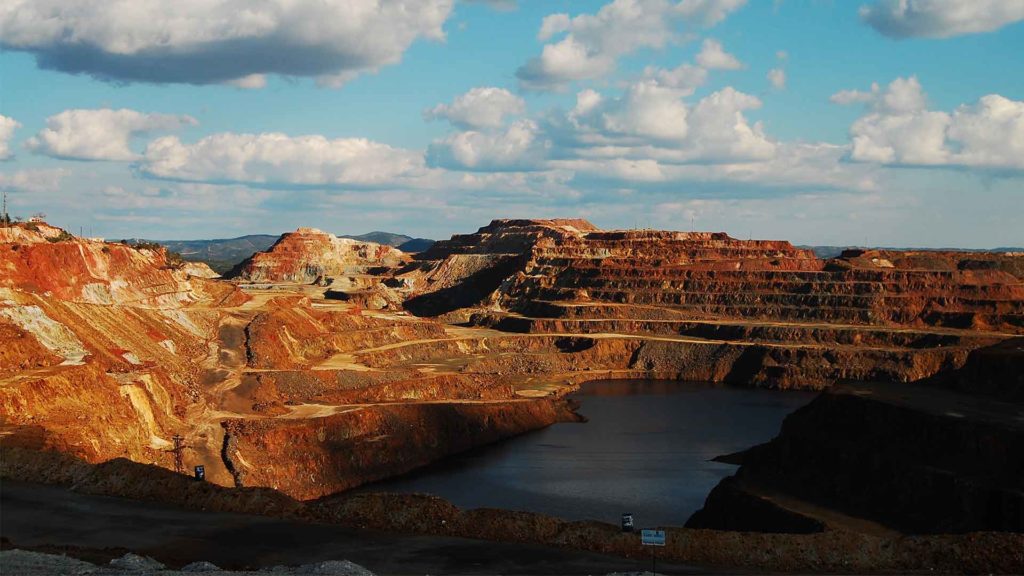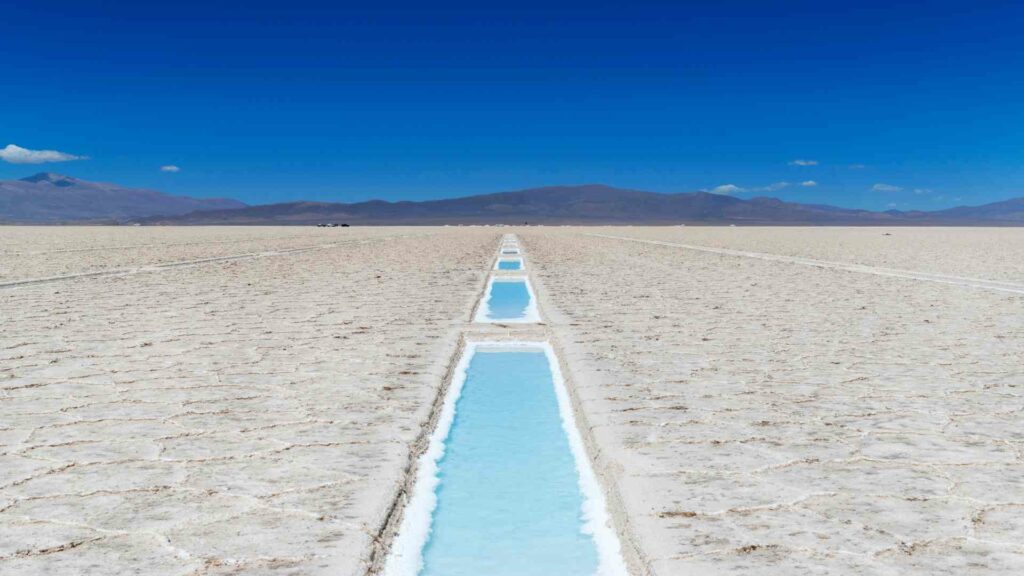Rio Tinto
Rio Tinto is a major player in Boron mining. The company has been around for more than 100 years. And now it employs more than 60,000 people across the globe. In this blog post, we will take a look at Rio Tinto’s role in Boron mining and where they are located. We shall also check out how they conduct operations, and why you should care about what they do.

Rio Tinto is the leading producer and exporter of sodium metaborate. It is a component in many products like laundry detergent and bleach. Rio Tinto is a major player in the mining sector. They are responsible for producing more than 600 million pounds of borates per year. They also produce about 150 million kg (330 lbs) of sodium metaborate.
Boron mining is the process of extracting Boron from its natural location to sell it. It requires a lot of different machinery and resources, which includes drills or other excavation equipment. Boron mining is a long process that involves many steps. They use concentration or mineral processing techniques like dissolution, evaporation, crystallization, etc. Borate minerals are concentrated into various grades that correspond to their particular use.
Rio Tinto one of the largest mining companies in the world. The company operates mines around the globe and processes boron primarily from Western Sahara on behalf of Moroccan interests. But it is operating there since 1975 due to contracts made with Morocco before Rabat’s independence.
The company was founded by two Scotsmen: Captains James Sutherland (Jock) Ross and John Mackay. They recognized that iron ore was found in Red Lake County, Minnesota where they set up their first mine. Rio Tinto then called it Iron Mountain Mine. They were pioneers at this time because people did not consider extracting iron from North America before.
The company has an extensive global network. It is involved with borates production, refining, and marketing. They have tie-up with major industries like glass making, agricultural chemicals as well as the food industry. It also supplies nearly half of the world’s uranium requirements through its mines in Western Australia.
What does Rio Tinto contribute to Boron mining?
The company has mines across nearly every continent for various minerals. But one area where it stands out from the rest is its contribution to boron production.
The company has operations in more than 40 countries across six continents including Australia, India, Turkey, and the US. Rio Tinto operates in boron mining through its influence on the concentrated areas of supply and demand. It also operates by acquiring control over key mines that are close to production limits. Or they pick the ones which have a poor environmental management profile. Like Australia’s Henderson mine where Rio is developing a new tailing storage facility with no public consultation.
How does Rio Tinto operate?
Rio Tinto operates in mining, refining, and marketing boron. They have an extensive global network and are involved with producing and supplying. The company also supports the production of many different products containing borate minerals.
One way that Rio conducts its mining operations is through open-pit mining methods. This method involves digging up the surface rock to reveal valuable ores below ground level such as borates or copper ore deposits for example.
Rio Tinto supplies nearly half of the world’s uranium requirements through its mines such as those found near Kadina. This means you can trace up to 40% of all nuclear power generation back to these mines. It includes some power plants that supply to Europe since 1984. This is since they signed a contract with European Nuclear Fuels Ltd.
Rio Tinto conducts operations through several different subsidiaries including Rio Tinto Borax Inc., Kennecott Utah Copper Corporation, BHP Billiton Plc, Coal India Ltd., Alcan Primary Metal Group (APMG), Rusal Limited, and Anglo American Platinum Limited. In addition to these companies, there is also an extensive management team working alongside them. They help with their day-to-day business affairs around the world.
Where is Rio Tinto located?
Rio Tinto is located in over 50 countries. However, you can heavily find them in Australia and the United States.
Rio Tinto is conducting mining operations since 1873 in various parts all across the world. It works with headquarters in London, England. From here, it conducts its business across the U.S., Canada, South America (Argentina), and Australia (Queensland). It has 12 mines operating around the world. Their mines are located all across Chile, Western Australia, and Eastern Australia.
The company has operations around the world including
- Kazakhstan, South Africa, China, and Canada for Borates Mining;
- Western Australia (Kadina) for Uranium mining;
- Queensland and Montana for Copper mining;
- Kalgoorlie Goldfields in Western Australia for Gold mining;
- an office block in Adelaide as well as at many other sites around the globe.
Why did they invest in boron mining?
Rio Tinto is investing in the mining of boron so that it can help with the production and use of products made from Borax. While there are many applications for Boron in everyday life, they have chosen to focus on only a few:
- Laundry Detergents
- Baking Powder
- Detergents (non-phosphate)
- Pharmaceuticals
- Metal Treatments.
This is because these industries need this product more than others do or will not be impacted by any decrease in supply. All other goods require small amounts, if at all. Therefore, Rio Tinto has decided against investing time into research about different types of industry usage which would be very costly. Instead, they take up company resources for better allocation.
How does Rio Tinto overcome its challenges?
The company Rio Tinto is in the Western Australian state. The mining of boron-rich ore for its extraction can be dangerous and requires heavy machinery. It is because these mines are typically found near mountainsides or deep underground.
To remain competitive with other Borax mine operators, they need to find a replacement for mined-out boron-rich ores. They will yield high-quality products without needing as much production time and effort.
Rio Tinto and their future goals
Rio Tinto is planning to increase its boron product output. And to do so, they are mining for new ores. They have a goal of creating more Borax by 2020. It is possible through the exploration of different mines around the world.
Rio Tinto’s future goals also include improving safety standards at all mines worldwide. They want to ensure that employees work with minimal risk exposure. In addition, they want to produce higher quality products without compromising on productivity or efficiency levels from mine operations. Mainly because these factors impact its bottom line.
Expansion plans
Rio Tinto is in the mining business for over a century. And as one of the world’s top producers, they are present on all continents. To maintain its position at the forefront of global mineral development, Rio Tinto is expanding mines around the world through exploration and new mine developments.
Rio Tinto plans to develop four major expansion projects. They are intending to increase production capacity with the following projects:
Iron ore project (Koolan Island) – It will more than double Australia’s iron ore exports.
A manganese project in Gabon will give access to Africa’s significant deposits that are currently not being exploited.
The Fortescue Metals Group Acquisition – They plan to complete by the end of this year. It will bring significant new iron ore production to Western Australia.
Expansion to the Pilbara – It might increase access and capacity for future mineral projects.
Takeaways
There are over 60 borates mines around the world producing about 12 million metric tons per annum. The major producers include the United States with 74% followed by Turkey at 18%, China at three percent, Jordan at two percent, and Portugal one percent. To maintain its position as a global leader in minerals development, Rio Tinto can see boron as a key component.
The Company Rio Tinto is a major player in the mining industry for over 100 years. And they are still going strong. As one of the world’s largest producers, buyers, sellers, and exporters of natural resources including aluminum, copper, diamonds, and gold, the company is a major player in the mining, extraction and production of borates and boron.





